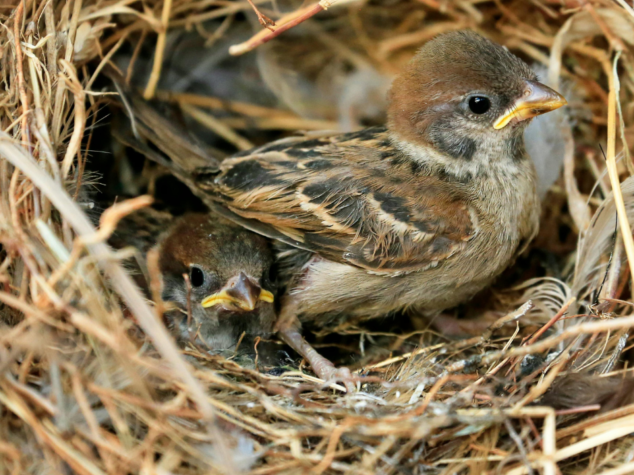As spring arrives, many wild animals enter their mating season, leading to an increase in baby animals being born.
This means homeowners may start noticing young wildlife in their yards, gardens, or even inside their homes. While it can be tempting to step in and help, knowing how to handle these situations correctly is crucial for both the animals' safety and yours.
Why Are Baby Animals on Your Property?
During the spring and early summer, animals such as raccoons, squirrels, skunks, rabbits, and birds give birth to their young. These baby animals might be found:
- In trees, attics, sheds, or under decks (squirrels, raccoons, and birds)
- In dens under porches or in woodpiles (skunks, foxes, and rabbits)
- On the ground, alone and seemingly abandoned (fawns, baby birds, or rabbits)
But don’t panic! Many baby animals that appear to be abandoned are actually fine—wild parents often leave their young alone for hours at a time while they search for food.
What to Do If You Find a Baby Animal on Your Property
1. Observe from a Distance
Before taking action, watch the baby animal from a safe distance for at least a few hours. Many wild animals, such as deer and rabbits, leave their young alone during the day and return later.
- If the baby is alert, warm, and not visibly injured, leave it alone—its mother is likely nearby.
- Do not touch or move the animal unless you are sure it is in immediate danger.
2. Check for Signs of Injury or Illness
If the animal appears weak, cold, bleeding, or attacked by another animal, it may need help. Look for these warning signs:
- Visible wounds or bleeding
- Flies, maggots, or a bad odor
- Shivering or difficulty moving
- Crying or making distress calls for long periods
If you notice these symptoms, contact a wildlife rehabilitator immediately.
3. Do Not Feed or Give Water
Many people think they should feed a baby animal, but this can do more harm than good. Young wildlife have specific diets, and the wrong food can make them sick or even kill them.
Instead, keep the animal in a quiet, warm, and safe place while waiting for professional help.
4. Protect It from Predators
If the baby animal is in an unsafe location (such as a busy road or an area with pets), gently move it to a nearby sheltered spot—but only if necessary.
For example:
- If a baby bird has fallen from its nest, place it back in the nest if possible.
- If a baby rabbit’s nest has been disturbed, cover it lightly with grass or leaves and leave it alone.
- If a young raccoon or squirrel is wandering alone, wait to see if the mother returns before intervening.
5. Call a Wildlife Professional for Help
If you are unsure what to do, reach out to a licensed wildlife rehabilitator or your local animal control agency. They can guide you on whether intervention is needed.
How to Prevent Wildlife from Nesting on Your Property
To avoid future wildlife encounters, take steps to wildlife-proof your home:
- Seal entry points: Check attics, chimneys, sheds, and crawl spaces for openings and close them off.
- Secure trash cans: Use lids that lock to prevent raccoons and skunks from rummaging for food.
- Remove food sources: Don’t leave pet food or birdseed outside overnight.
- Trim trees and bushes: This reduces shelter for nesting animals.
- Install fencing: Protect gardens and under-porch areas to keep burrowing animals out.
If you’re experiencing unwanted pests in your home or business, you want effective service as soon as possible to ensure the problem doesn’t become even worse. The professionals at Complete Pest Solutions are your top choice for timely, thorough pest control services and wildlife removal in Atlanta. Contact us today for pest control help when you need it!

